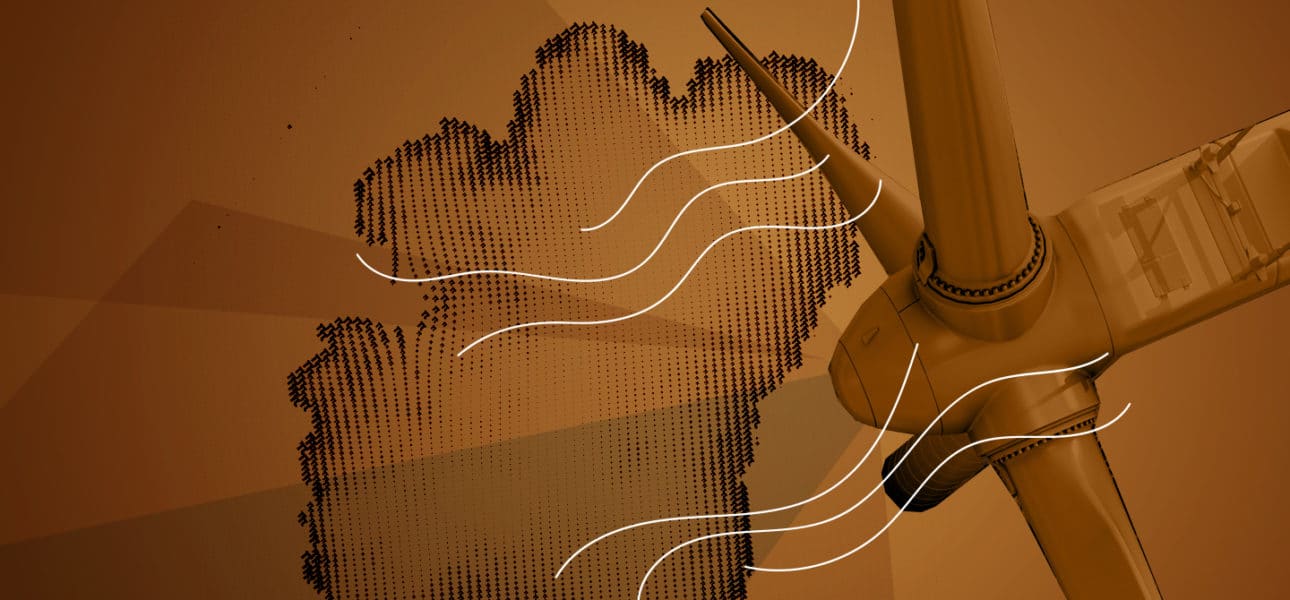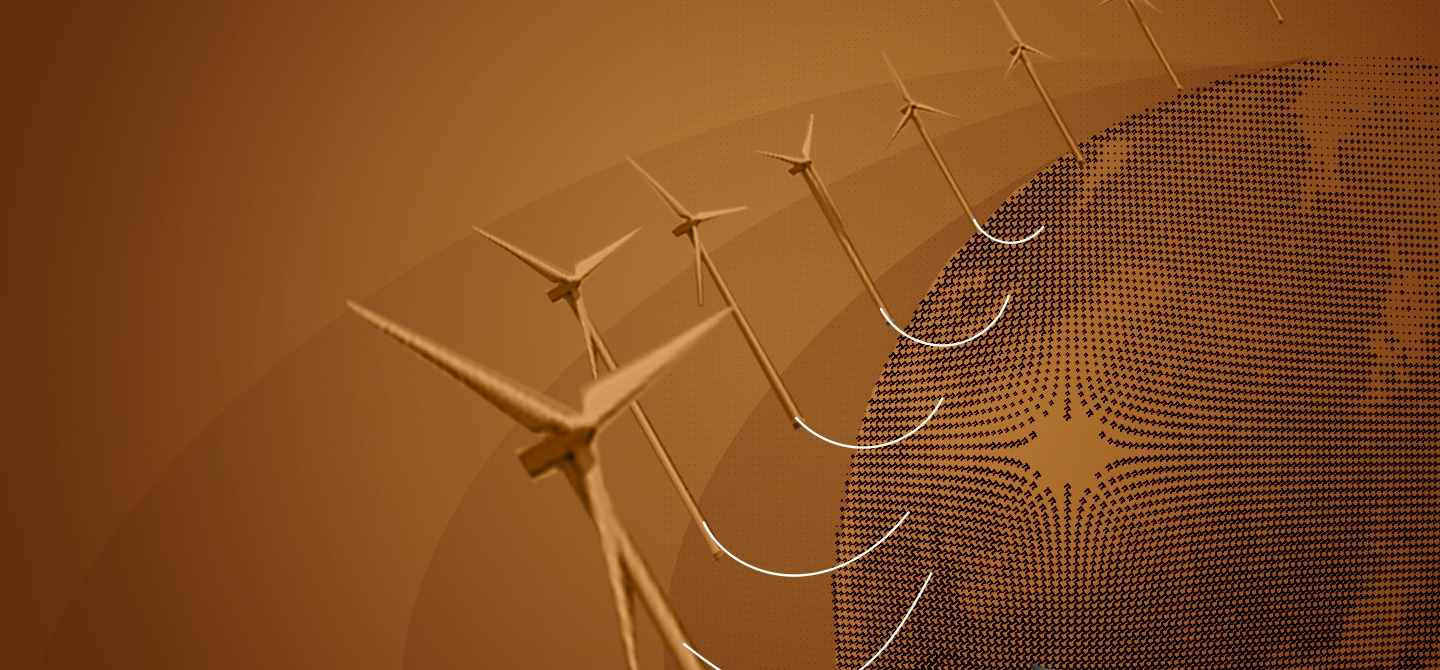Since the Paris Agreements were adopted in 2015, the international objectives in the fight against climate change have been clear: to aim for carbon neutrality by mid-century. It is impossible to achieve this energy transition goal without the massive development of renewable energies. Offshore wind power is at the forefront: all projections show that the sector, which currently accounts for only 0.3% of global electricity production, will dramatically evolve. In France, the RTE describes the sector as “one of the most promising for long-term low-carbon electricity production”1. The UK is the champion to date: installed offshore wind capacity is 10.4 GW (compared to 14 GW onshore), and the country is targeting 40 GW by 20302. Even though no wind farms are currently operational in France, RTE forecasts offshore wind capacity of 22 to 62 GW by 2050. By then, the historical nuclear fleet (existing infrastructure) will see its capacity decrease, due to the closure of ageing plants – i.e. second generation reactors built in the 1980s. It will reduce from about 60 GW of current production to 24 GW, or even 16 GW, depending on the scenarios in which nuclear power still has a place in the energy mix.
Huge potential for offshore wind
Wind turbines can be fixed to the seabed at depths of up to 50 metres or beyond that on a moored floating base. “For economic reasons, offshore wind turbines are best installed in areas in which the average annual wind speed is at least 8 metres per second,” explains Daniel Averbuch. “This limitation, together with the minimum depth requirement, results in an enormous technical potential.” More precisely, the IEA estimates3 the potential of offshore wind power at 420,000 TWh of electricity per year, that is, 11 times the global demand for electricity in 2040.
“The unit power of offshore wind turbines is currently 10 MW, and the industry is aiming for 15 MW or more by the end of the decade,” explains Daniel Averbuch. “This is much more than onshore wind turbines, which are smaller so as to limit visual impact for nearby residents and which have a unit power of around 3 MW”. Another advantage of offshore wind power is the load factor. This parameter represents the ratio between the electricity actually produced and the theoretical power of the turbine. It is often a problem for renewable energies that rely on intermittent sources such as sunshine or wind.
But offshore wind turbines outperform all other forms of electricity generation except nuclear energy: new wind farms have an average load factor of 40–50%, compared to 25% for onshore wind turbines in France and 14% for solar photovoltaic panels4. The Hywind Scotland wind farm has even set a new record with an annual average of 57%!5 “This can be explained by the nature of the winds, which are stronger and more regular at sea, but also by the design choices made for offshore wind turbines,” explains Daniel Averbuch. Europe has a prime location: in the North Sea, the Baltic Sea, the Bay of Biscay, the Irish Sea and the Norwegian Sea, winds reach load factors of 45 to 65%, compared to 35 to 45% for China or Japan and 40 to 55% for the United States.
This greater production stability makes offshore wind an interesting choice for the balance of the energy mix. Moreover, production is complementary to that of other renewable energies: in Europe, China and the United States, it is more important in winter, unlike that produced by photovoltaic panels.
Towards mature technology
Thanks to these advantages, offshore wind is rapidly expanding. Global installed capacity has grown from 3 GW in 2010 to 23 GW in 2018, outpacing all other sources of electricity except photovoltaics. Europe, led by the UK, dominates the market, accounting for 80% of installed capacity in 2018. China could take the lead by 2030, however, increasing its installed capacity from 5 to 36 GW. In France, Ademe estimates the economic potential of offshore wind power at 924 million euros a year in added value by 2030, with 11,300 direct jobs being created each year.
For years, the cost of offshore wind power has been an obstacle: the average production costs of onshore wind power in France are estimated at around €100/MWh, compared to €79–149/MWh for hydro, €50–70/MWh for onshore wind, €45–81/MWh for ground-based solar photovoltaic or €43.8–64.8/MWh for nuclear (depending on the method of calculation used). However, the tender for the Dunkerque wind farm in 2019 shows a faster than expected decrease in costs 6: the price per MWh for this tender is €44. 7Production costs could even fall to €25–30 per MWh by 2030. For Daniel Averbuch, this significant decrease is explained by “the greater maturity of the industry, which reduces the cost of bank loans. The increase in the size of offshore wind turbines also makes it possible to produce more with fewer turbines,” he adds, “and therefore to reduce investment and maintenance costs.”
Obstacles to overcome
It will not be all plain sailing though: the success of offshore wind power will depend will depend on overcoming certain difficulties. “The increase in electricity production will require stronger electricity transport networks,” explains Daniel Averbuch. “Offshore wind power concentrates electricity production in certain geographical regions: it requires the dissipation of large quantity of energy, unlike onshore wind power or photovoltaics, which are more distributed.” Another important point: the materials needed to build wind turbines. Daniel Averbuch adds: “The resources of critical metals and rare earths required for the energy transition are the subject of prospective work, particularly within the IFPEN8. However, wind energy, which requires rare earths for permanent magnets, only represents a small share of the global market.”
Finally, floating offshore wind – installed in areas deeper than 50 metres – is subject to greater uncertainty. About 70% of the world’s production potential is based on this type of wind turbine. The technology is less mature and no floating farms have yet reached the commercial stage. But even if no floating wind farms were to be built, this would not herald the death knell of offshore wind farms. The potential of installed wind turbines alone surpasses the projected global demand for electricity by 2040.
The environmental impact of offshore wind turbines is weak, according to a Life Cycle Assessment (LCA). The LCA takes into account transport, manufacturing, installation, use and the turbines’ end of life. In 2015, Ademe estimated the emission rate of French wind farms at 14.8 grams of CO2 equivalent per kWh9 over a lifetime of 20 years. A recent study on floating wind turbines evaluates their LCA at 19.5 g CO2 equivalent/kWh for a 25-year life span10. These values are comparable to onshore wind (14.1 g CO2 equivalent/kWh), lower than Chinese-made photovoltaics (56 g CO2 equivalent/kWh) and much lower than emissions from a gas-fired power plant (418 g CO2 equivalent/kWh) but still higher than nuclear (less than 6 g CO2 equivalent/kWh)1112.








